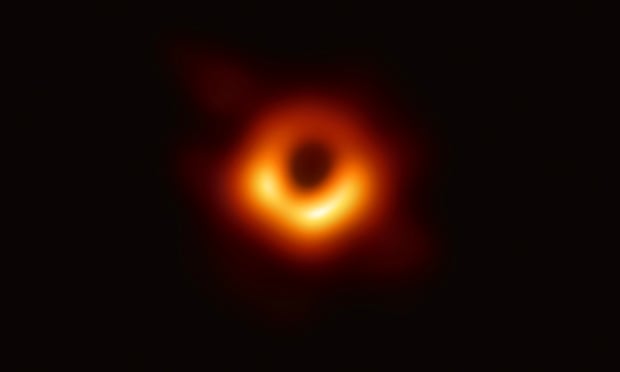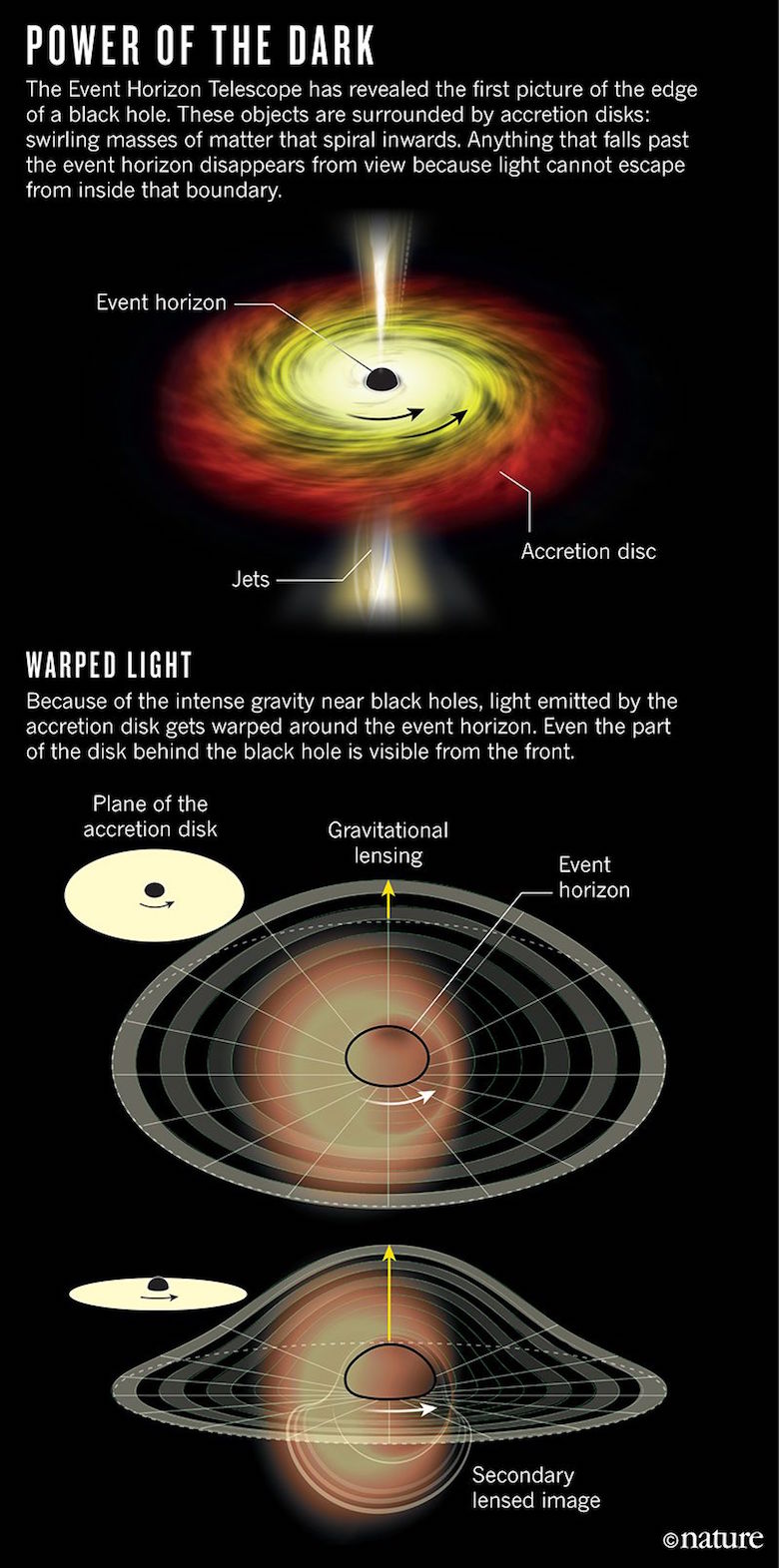At six simultaneous press conferences held around the world today, astronomers revealed the first photograph of a black hole
.
The picture shows a halo of dust and gas, tracing the outline of a colossal black hole, at the heart of the Messier 87 galaxy, 55m light years from Earth.
…The image gives the first direct glimpse of a black holes accretion disc, a fuzzy doughnut-shaped ring of gas and dust that steadily “feeds” the monster within.
The EHT picks up radiation emitted by particles within the disc that are heated to billions of degrees as they swirl around the black hole at close to the speed of light, before vanishing down the plughole.
The halo’s crescent-like appearance in the image is because the particles in the side of the disc rotating towards Earth are flung towards us faster and so appear brighter. The dark shadow within marks the edge of the event horizon, the point of no return, beyond which no light or matter can travel fast enough to escape the inexorable gravitational pull of the black hole.
The rendering below from the journal Nature explains how we see a black hole.
The images – a glowing, ring-like structure – show the supermassive black hole at the centre of the galaxy M87, which is around 16 megaparsecs (55 million light years) away and 6.5 billion times the mass of the Sun. They reveal, in greater detail than ever before, the event horizon – the surface beyond which gravity is so strong that nothing that crosses it, even light, can ever climb back out.
…A black hole’s event horizon should appear five times larger than it is, because the hole warps the surrounding space and bends the paths of light. The effect, discovered by physicist James Bardeen at the University of Washington in Seattle in 1973, is similar to the way that a spoon looks larger when dipped in a glass of water. Moreover, Bardeen showed that the black hole would cast an even larger ‘shadow’. This is because within a certain distance of the event horizon, most light rays bend so much that they effectively orbit the black hole.
This three-minute video explains how the image was captured using eight telescopes spread around the globe.



Here’s a nice video that gives a good picture of what happens with the bent light.
How to Understand the Image of a Black Hole, by Veritasium:
Apparently there are “black hole denialists” who claim that black holes haven’t been proven to exist; which is interesting because they don’t have another theory for how an equivalent mass in the same space would behave.
People are even stranger to me than black holes.
Thanks, ahcuah, that was a good tutorial!
Seeing predictions I grew up with turning into actual photographs is so cool.